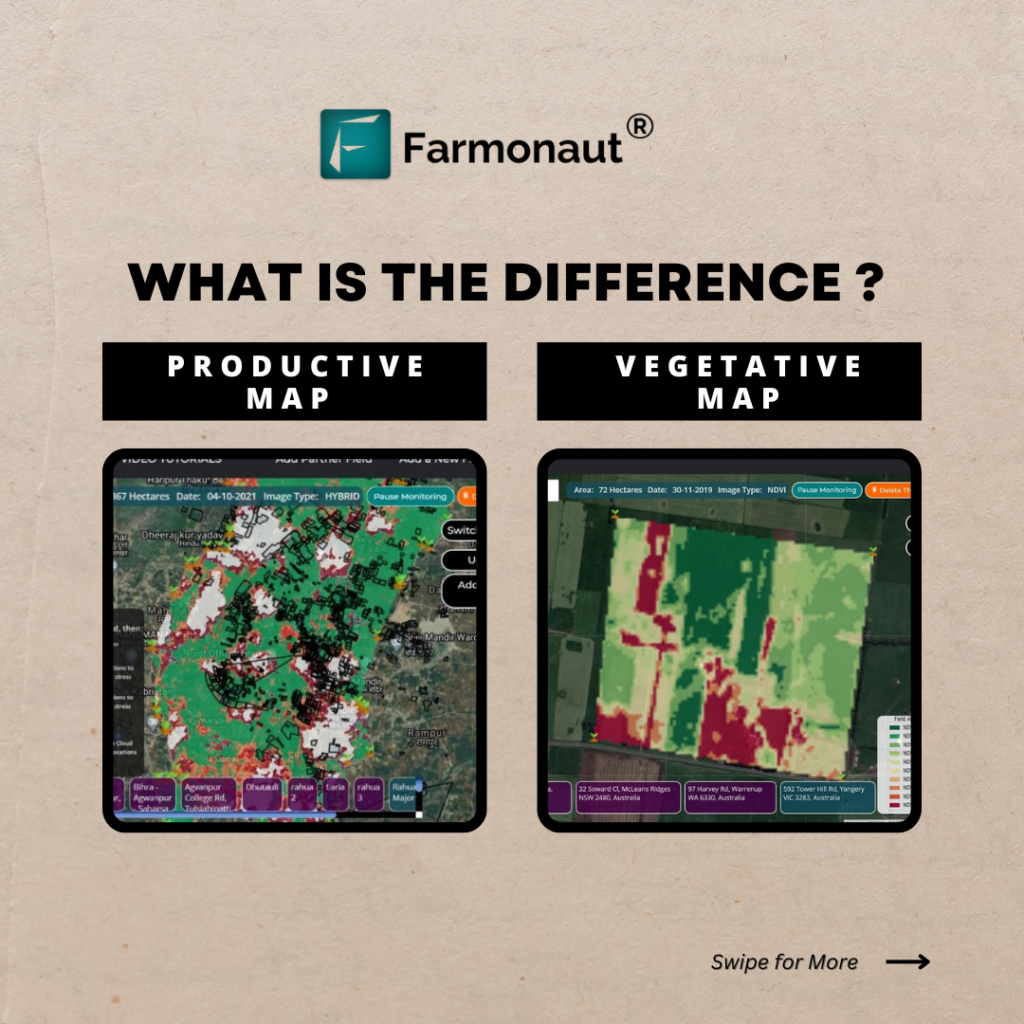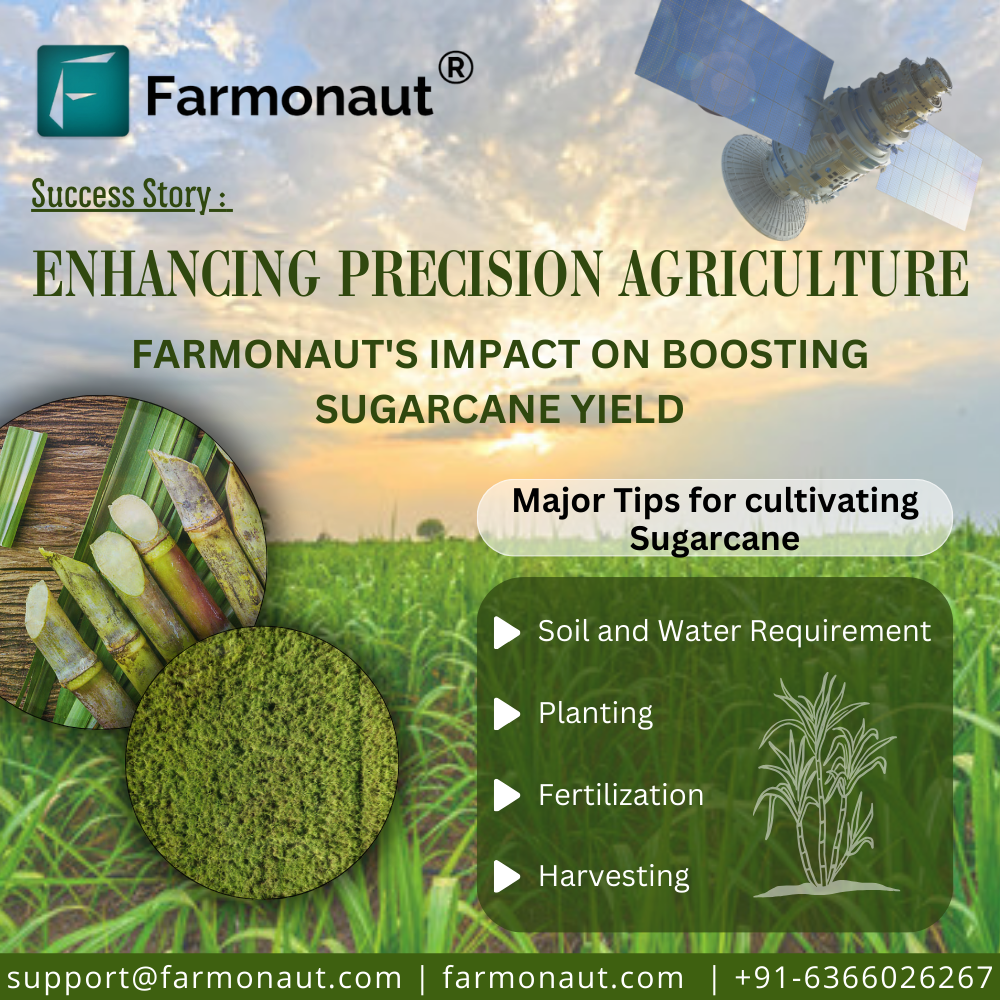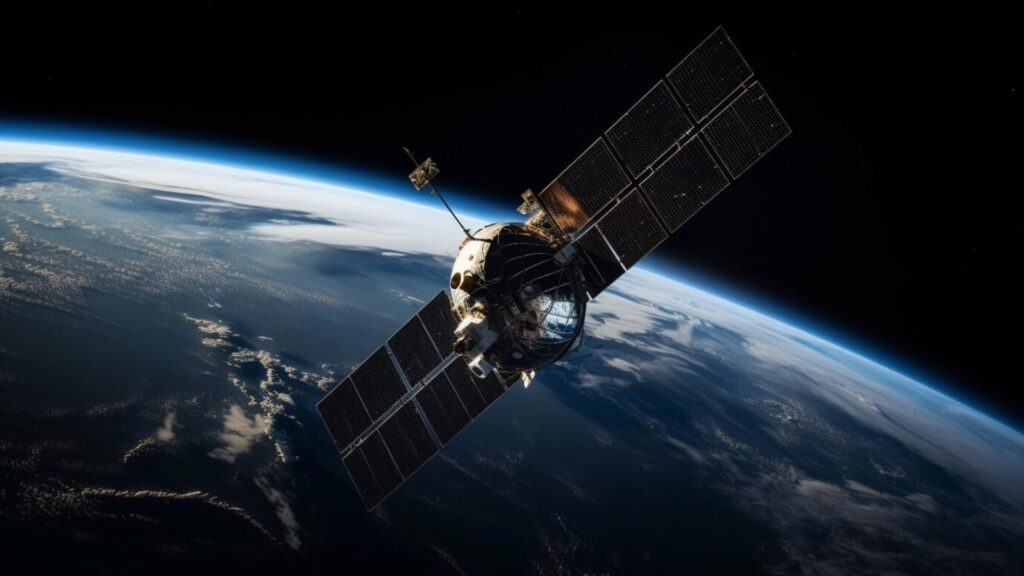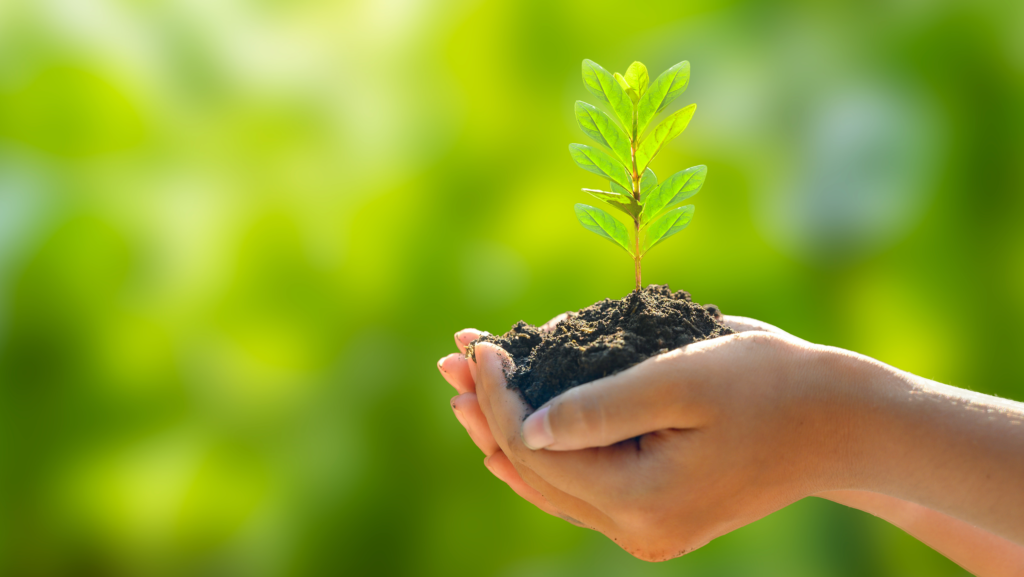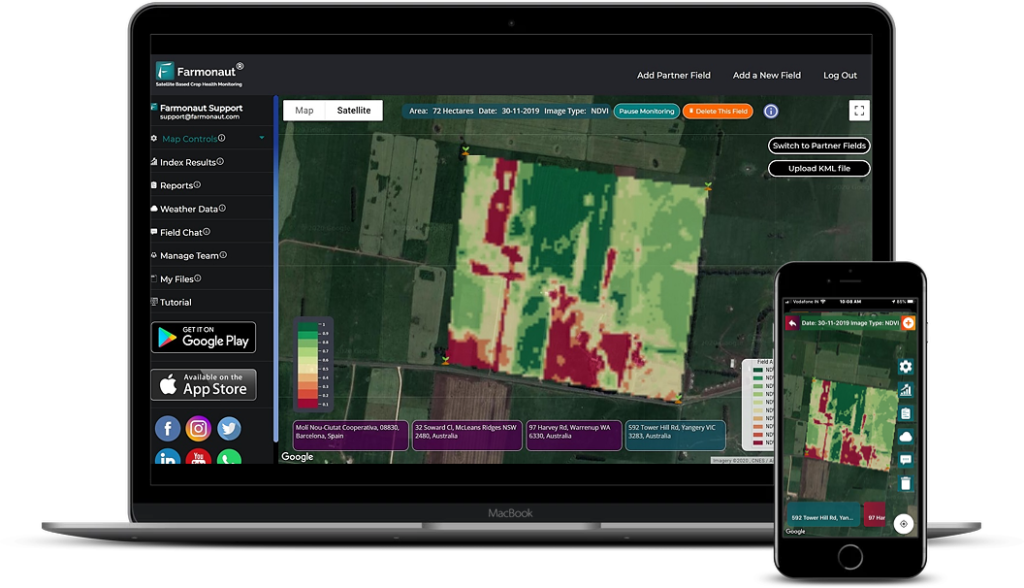Comprehensive Guide to Guava Leaf Diseases: Identification, Treatment, and Prevention
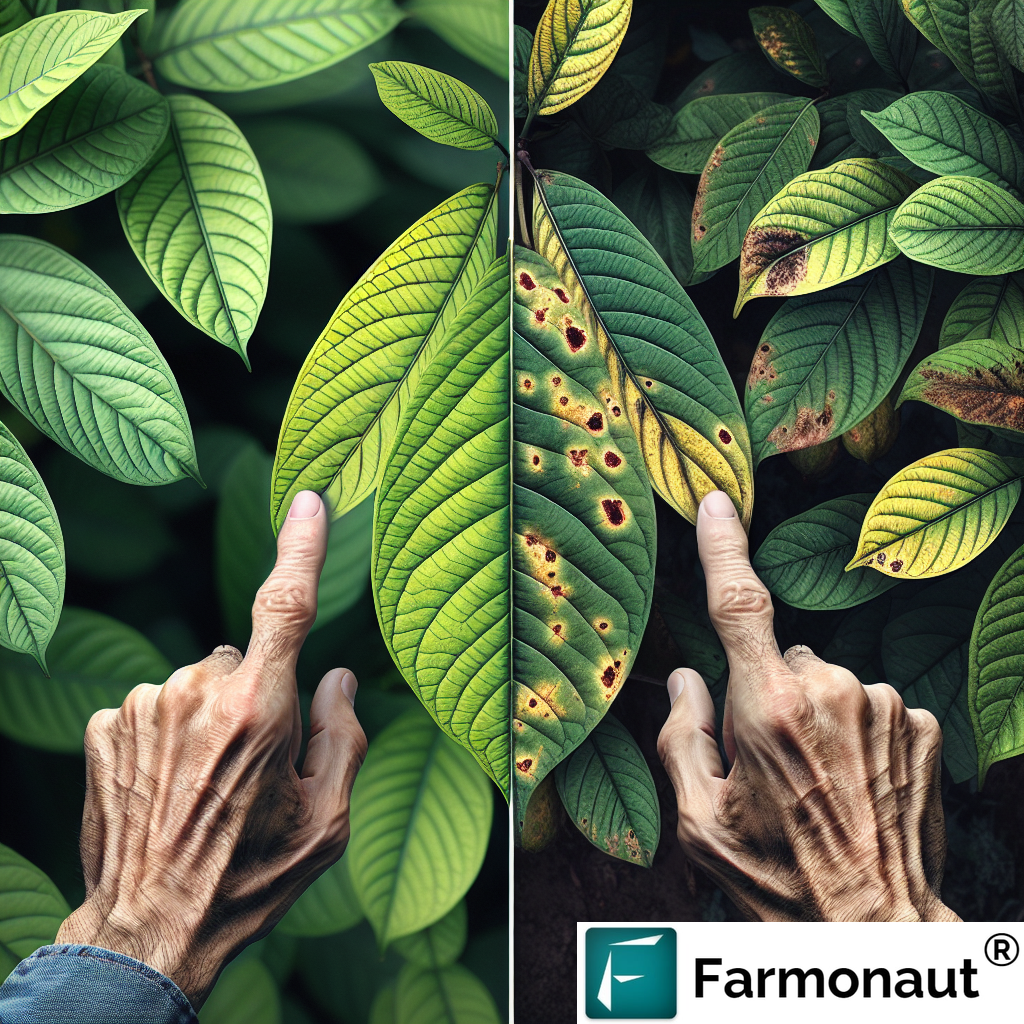
At Farmonaut, we understand the importance of maintaining healthy guava orchards. As leaders in agricultural technology, we’re committed to providing farmers with the tools and knowledge they need to identify and manage guava leaf diseases effectively. In this comprehensive guide, we’ll explore the most common guava leaf diseases, their symptoms, and the best practices for treatment and prevention.
1. Introduction to Guava Leaf Diseases
Guava (Psidium guajava) is a popular fruit crop grown in tropical and subtropical regions worldwide. However, like all plants, guava trees are susceptible to various diseases that can affect their leaves, impacting fruit production and overall tree health. Understanding these diseases is crucial for effective orchard management.
Guava leaf diseases can be caused by various pathogens, including fungi, bacteria, and viruses. Environmental factors such as humidity, temperature, and soil conditions can also play a significant role in disease development and spread. As farmers and agricultural professionals, it’s our responsibility to stay informed about these diseases and implement proper management strategies.
2. Common Guava Leaf Diseases and Their Symptoms
Let’s explore some of the most prevalent guava leaf diseases and their characteristic symptoms:
2.1 Anthracnose (Colletotrichum gloeosporioides)
- Symptoms: Dark, sunken lesions on leaves, often with a yellow halo
- Affects: Leaves, fruits, and young shoots
- Favored conditions: High humidity and warm temperatures
2.2 Algal Leaf Spot (Cephaleuros virescens)
- Symptoms: Circular, raised, rust-colored spots on leaves
- Affects: Primarily leaves, but can also appear on fruits and stems
- Favored conditions: High humidity and poor air circulation
2.3 Bacterial Leaf Blight (Pseudomonas syringae pv. psidii)
- Symptoms: Water-soaked lesions that turn brown and necrotic
- Affects: Leaves, twigs, and fruits
- Favored conditions: Cool, wet weather
2.4 Guava Rust (Puccinia psidii)
- Symptoms: Yellow-orange pustules on leaves, often with leaf distortion
- Affects: Young leaves, shoots, and fruits
- Favored conditions: High humidity and moderate temperatures
2.5 Cercospora Leaf Spot (Cercospora psidii)
- Symptoms: Small, circular spots with gray centers and dark borders
- Affects: Primarily leaves
- Favored conditions: Warm, humid weather
3. Identifying Guava Leaf Diseases Using Images
Visual identification is a crucial skill for managing guava leaf diseases effectively. Here, we’ll provide detailed descriptions and images of common guava leaf diseases to aid in accurate diagnosis.

3.1 Anthracnose
Anthracnose lesions on guava leaves typically appear as dark, sunken spots with a yellow halo. As the disease progresses, these lesions may coalesce, causing leaf distortion and premature leaf drop. In severe cases, anthracnose can also affect fruits, leading to significant yield losses.
3.2 Algal Leaf Spot
Algal leaf spot is characterized by circular, raised spots on the upper surface of guava leaves. These spots are usually rust-colored or reddish-brown and have a velvety texture. Over time, the affected areas may become necrotic and fall out, leaving shot-hole symptoms.
3.3 Bacterial Leaf Blight
Bacterial leaf blight begins as small, water-soaked lesions on guava leaves. These lesions quickly enlarge and turn brown, often surrounded by a yellow halo. In severe infections, leaves may appear scorched and fall prematurely.
3.4 Guava Rust
Guava rust is easily identifiable by the bright yellow-orange pustules that appear on the undersides of leaves. Heavily infected leaves may become distorted and fall off. Rust can also affect young shoots and fruits, causing deformities and reduced yield.
3.5 Cercospora Leaf Spot
Cercospora leaf spot manifests as small, circular spots on guava leaves. These spots typically have gray centers with dark borders. As the disease progresses, the spots may enlarge and coalesce, leading to leaf yellowing and defoliation.
By familiarizing yourself with these visual symptoms, you can quickly identify guava leaf diseases in your orchard. Remember, early detection is key to effective management and minimizing crop losses.
4. Treatment Methods for Guava Leaf Diseases
Once you’ve identified a guava leaf disease in your orchard, it’s crucial to implement appropriate treatment methods promptly. Here are some effective strategies for managing common guava leaf diseases:
4.1 Cultural Control Methods
- Pruning: Remove and destroy infected leaves, branches, and fruits to reduce disease inoculum.
- Sanitation: Regularly clean up fallen leaves and fruits to prevent disease spread.
- Proper spacing: Ensure adequate spacing between trees to improve air circulation.
- Irrigation management: Avoid overhead irrigation to reduce leaf wetness duration.
4.2 Chemical Control Methods
While cultural practices are essential, chemical control may be necessary for severe infections. Always follow local regulations and consult with agricultural experts before applying any pesticides.
- Fungicides: For fungal diseases like anthracnose and cercospora leaf spot, copper-based fungicides or systemic fungicides may be effective.
- Bactericides: For bacterial leaf blight, copper-based bactericides can help manage the disease.
- Algaecides: For algal leaf spot, applications of copper sulfate or other registered algaecides may be beneficial.
4.3 Biological Control Methods
Biological control agents can be an environmentally friendly alternative to chemical pesticides:
- Trichoderma spp.: These beneficial fungi can help control soil-borne pathogens and boost plant immunity.
- Bacillus subtilis: This bacterium can be effective against various fungal and bacterial diseases.
- Pseudomonas fluorescens: Another beneficial bacterium that can help suppress plant pathogens.
4.4 Integrated Disease Management
At Farmonaut, we recommend an integrated approach to disease management, combining cultural, chemical, and biological methods for the best results. This approach not only helps control existing diseases but also prevents future outbreaks.
5. Prevention Strategies
Preventing guava leaf diseases is often easier and more cost-effective than treating them. Here are some key strategies to keep your guava orchard healthy:
5.1 Site Selection and Preparation
- Choose well-drained soils to prevent waterlogging.
- Ensure proper soil pH (6.0-7.0) for optimal nutrient uptake.
- Avoid planting in areas with a history of severe disease pressure.
5.2 Resistant Varieties
Select guava varieties that show resistance to common diseases in your area. While no variety is completely immune, some cultivars may have better tolerance to specific pathogens.
5.3 Proper Nutrition
- Maintain balanced fertility to promote plant health and disease resistance.
- Avoid excessive nitrogen application, which can promote succulent growth susceptible to diseases.
- Ensure adequate levels of micronutrients, especially zinc and boron, which are crucial for guava health.
5.4 Water Management
- Implement efficient irrigation systems like drip irrigation to minimize leaf wetness.
- Water early in the day to allow leaves to dry before nightfall.
- Avoid overwatering, which can create favorable conditions for root diseases.
5.5 Regular Monitoring
Implement a routine scouting program to detect diseases early. This is where Farmonaut’s satellite-based monitoring system can be particularly beneficial, providing real-time insights into crop health across your entire orchard.
6. How Farmonaut’s Technology Aids in Disease Management
At Farmonaut, we’re proud to offer cutting-edge technology that revolutionizes guava leaf disease management. Our satellite-based monitoring system provides farmers with valuable insights that can help prevent, detect, and manage diseases more effectively.
6.1 Early Detection
Our advanced satellite imagery can detect subtle changes in plant health before they’re visible to the naked eye. This early warning system allows farmers to take prompt action, potentially preventing full-blown disease outbreaks.
6.2 Precision Agriculture
Farmonaut’s technology enables precise application of treatments. By identifying specific areas of concern within your orchard, you can target your interventions, saving time and resources while minimizing environmental impact.
6.3 Data-Driven Decision Making
Our platform provides historical and real-time data on various factors affecting crop health, including weather patterns, soil moisture, and vegetation indices. This wealth of information empowers farmers to make informed decisions about disease management strategies.
6.4 Integration with AI Advisory System
Our Jeevn AI advisory system analyzes satellite data and other inputs to provide personalized recommendations for disease management. This AI-driven approach helps optimize your guava orchard’s health and productivity.
To experience the benefits of Farmonaut’s technology firsthand, visit our app page or explore our API documentation for integration options.
7. Comparison: Farmonaut Satellite System vs. Drone and IoT-based Monitoring
While drone and IoT-based systems have their merits, Farmonaut’s satellite monitoring system offers unique advantages for managing guava leaf diseases. Here’s a comparison:
| Feature | Farmonaut Satellite System | Drone-based Monitoring | IoT-based Monitoring |
|---|---|---|---|
| Coverage Area | Large scale (entire farms/regions) | Limited by flight time and regulations | Limited by sensor placement |
| Frequency of Updates | Regular (every few days) | Dependent on manual flights | Real-time, but localized |
| Initial Setup Cost | Low | High (equipment and training) | Moderate to High (sensors and network) |
| Maintenance | Minimal | Regular (equipment upkeep) | Regular (sensor calibration/replacement) |
| Data Analysis | Advanced AI-driven insights | Often requires specialized software | Varies by system |
| Weather Independence | High (can penetrate clouds) | Low (affected by wind, rain) | Moderate (some sensors affected by weather) |
| Scalability | Highly scalable | Limited by operational capacity | Requires additional sensors for scaling |
As you can see, Farmonaut’s satellite system offers unparalleled coverage, cost-effectiveness, and scalability for managing guava leaf diseases across large orchards or multiple locations.
8. FAQs about Guava Leaf Diseases
Q1: How often should I inspect my guava trees for leaf diseases?
A: We recommend inspecting your guava trees at least once a week during the growing season. However, with Farmonaut’s satellite monitoring, you can receive regular updates on your orchard’s health without manual inspections.
Q2: Can guava leaf diseases spread to other fruit trees in my orchard?
A: While some pathogens are specific to guava, others can affect a range of fruit trees. It’s best to isolate infected trees and implement proper sanitation practices to prevent disease spread.
Q3: Are organic methods effective for controlling guava leaf diseases?
A: Yes, many organic methods can be effective, especially when used as part of an integrated disease management approach. These include cultural practices, biological controls, and organic-approved pesticides.
Q4: How can I distinguish between nutrient deficiencies and diseases in guava leaves?
A: While both can cause leaf discoloration, nutrient deficiencies typically affect leaves uniformly, while diseases often create irregular patterns or spots. Farmonaut’s technology can help differentiate between these issues by analyzing spectral data.
Q5: Can climate change impact the prevalence of guava leaf diseases?
A: Yes, changes in temperature and precipitation patterns can affect disease prevalence and severity. Farmonaut’s historical data and predictive models can help you anticipate and prepare for these changes.
9. Conclusion
Managing guava leaf diseases is crucial for maintaining healthy, productive orchards. By understanding the common diseases, their symptoms, and effective management strategies, you can protect your guava trees and ensure optimal yields.
At Farmonaut, we’re committed to empowering farmers with the tools and knowledge they need to succeed. Our satellite-based monitoring system, combined with AI-driven insights, offers a powerful solution for detecting and managing guava leaf diseases efficiently and cost-effectively.
Ready to revolutionize your guava orchard management? Try Farmonaut today:
- Download our app for Android or iOS
- Explore our API documentation for custom integrations
- Subscribe to our services using the form below:
Together, we can build healthier, more productive guava orchards and contribute to sustainable agriculture worldwide.



